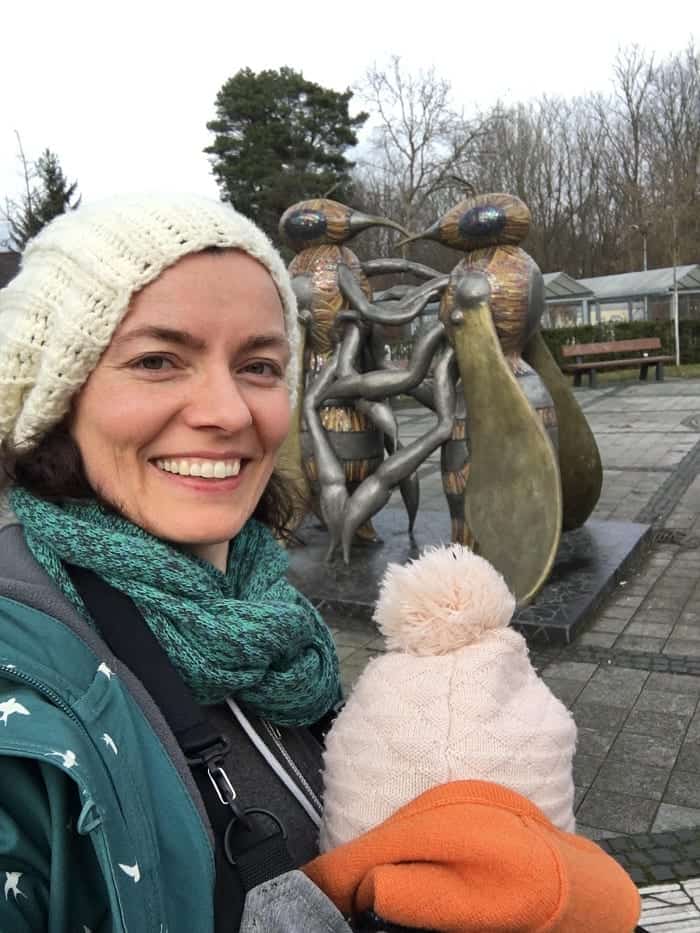Berlin doesn’t have one big museum like the Metropolitan Museum of Arts in New York or the British Museum in London. But Berlin has something similar: Museum Island, an ensemble of five museums right in the historic center of Berlin, next door to the huge Berlin Cathedral or “Berliner Dom” and the construction site for the reconstruction of the City Palace. Museum Island is situated on a large island in the river Spree, but it isn’t the whole island itself. It’s on the northern tip of the island where the City Palace, the former Royal Stables and many more buildings are situated. The southern part of this island is called “Fischerinsel” or “Fisherman’s Island”.
+++You might want to check out our self-guided Berlin Mitte East tour, or our post on other Berlin Museum recommendations.+++
Five Museums, one UNESCO World Heritage Site
Since 1999, Museum Island is a World Heritage Site of the UNESCO. Even though UNESCO is very strict about construction, modernization and traffic within world heritage sites, the railway is still allowed to cross Museum Island. Yes, the east-west railroad of Berlin goes right through Museum Island, you can see it using the S-Bahn or in long distance train. If you are passing by with the train, you go through the backyard of the museums and before you can figure out if there is something exciting to see you are already done. Therefore, take a walk through the island to truly enjoy it. The five museums are the “Alte Museum” (Old Museum), the “Neue Museum” (New Museum), the “Bode-Museum” (named after an influential art historian), the “Alte Nationalgalerie” (Old National Gallery) and the “Pergamon-Museum” (named after the Ancient Greek Pergamon Altar you can visit there).
One Hundred Years of Construction
Basically, Museum Island is a project of the Hohenzollern dynasty, the house of the kings of Prussia and later the emperors of Germany. It took one hundred years and five generations from King Frederick William III to Emperor William II to build the museums. The first museum to be built was the “Alte Museum”, finished in 1830. Its construction was the result of a more self-confident middle class, or bourgeoisie as opposed to the nobility, in the early 19th century. This new middle class valued education a lot and demanded to see the cultural treasuries like ancient statues and paintings the kings had assembled in their private treasure rooms. The last museum, the “Pergamon-Museum” was begun in 1910 but wasn’t finished until 1930 because of World War I and the hyperinflation of the early 1920s.
The First Museum: The “Altes Museum”
It was built between 1825 and 1830 and is a masterpiece of Karl Friedrich Schinkel, the famous neo-classical architect and sculptor of Berlin. The “Alte Museum” is situated right next to the “Berliner Dom”, built in 1905, that now dwarfs the museum that was meant to be a temple of culture and the arts. The “Alte Museum” actually looks like a Greek temple with ionic columns and a rotunda that resembles the one of the Pantheon in Rome. Inside the rotunda are statues of Greek and Roman gods and heroes. The “Alte Museum” hosts the collection of ancient art: Greek, Roman and Etruscan.
Nefertiti’s Home: The “Neue Museum”
The second museum is the “Neue Museum” from 1855, again a neo-classical building. The architect was August Stüler who had studied with Karl Friedrich Schinkel. It was needed because the “Alte Museum” couldn’t accommodate all the pieces of ancient art, the prehistoric collection and the Egyptian collection. One of Berlin’s most beautiful ladies has her residence here: the bust of Nefertiti, the Egyptian queen of the 14th century BC.
The “Alte Nationalgalerie”
This museum looks like a Greek temple as well and it was built between 1867 and 1876 by August Stüler and his colleague Carl Busse. It was meant to be the museum of then contemporary art, namely Prussian art. So, you find 19th century paintings there, mainly from the neoclassical, romantic and impressionist periods and some works of the early Modern art.
The Kaiser’s Museum: The Bode Museum
The most prominent building of the Museum Island is the Bode Museum with its characteristic cupola at the Northern tip of the island. Ernst von Ihme and Max Hasak constructed it between 1897 and 1904; both architects were employed at the imperial court. The museum was named originally after Kaiser Friedrich III, the “Kaiser for 99 days” who followed his father William I but died soon afterwards, as he had been severely ill for years already. The museum had been his idea, when he was still the crown prince. It’s the home of the sculpture collection, the coin collection and the Byzantine art.
A Museum for an Altar: The Pergamon Museum
In the 1870s and 1880s, the German engineer Carl Humann excavated the Pergamon Altar in the city of Pergamon in Turkey. In ancient times, this region of Turkey had been part of the Greek culture. The Pergamon Altar dates back to the 2nd century BC and is huge: 35.64 x 33.30 meters or 110 x 100 feet. It is decorated with columns and sculptures and has stairs. It might have been used for offerings in the ancient religion. The first Pergamon Museum of the late 1890s was soon too small: Germany had a lot of archaeologists and the government, scientific associations or the imperial court financed excavations. Thus, the second Pergamon-Museum was built to accommodate not only the altar, but also art and other objects from Greece and the Middle East, like the Ishtar Gate of Babylon.
Be smart when you buy tickets: There are a lot of discounts and packages. Ask your hotel concierge or check online.
On our Berlin-in-a-in a day-Walking Tour we’ll stop by the Berlin Dome.




